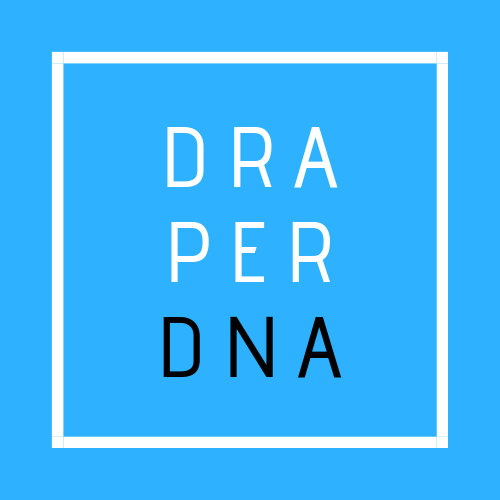The 1% Factor of B2B Lead Generation
October 18, 2022
Less than 1% of B2B leads become customers!
Ouch!
This bears repeating. Our friends at Forrester are reporting less than 1% of B2B leads become customers.
I asked a couple of consultants I respect for their thoughts on this statement. One said “I think the percentage is based on the product. Is it a high-dollar or complicated sale? Is it a new idea or product? How is the lead qualified? Is it a B2C or a B2B sale? I would ignore broad based stats like this and focus on the performance of my company.”
The other consultants agreed noting the complexity of lead generation. I believe making things complex is a business unto itself and it is often easier to make things complex than it is to make them easier. I suspect there is a profound quote from some business leader that supports this idea.
I prefer to make things simple. As quoted by Steve Jobs of Apple fame “Simplification is the ultimate form of sophistication.” He paraphrased Leonardo Da Vinci. Making things like lead generation easier, simple is challenging. Here is my take on it.
Basic Lead Generation
The act of generating a lead is an introduction. You are introducing yourself to another person. Qualifying this lead is taking the time to get to know this person. What are their interests, accomplishments, setbacks, challenges, and relationships? Are they open to making new acquaintances? Nurturing the lead is you facilitating a relationship with the new person. This takes time and consideration. When you generate, qualify, and nurture a new lead to create a relationship, you have accomplished the first goal of developing a new customer.
The second goal of developing a relationship with the new customer is to acquire a sale. It is unusual for a customer to purchase building products without forming a relationship first. The exception maybe commodity purchases like nails. Goal number three is to secure repeat sales, goal number four is to create a customer for life, and goal number five is for your customer to be a referral source for new customers.
Lead gen = introduction
Nurturing = facilitating a relationship
Relationship = goal one
Sale = goal two
Repeat sale = goal three
Lifetime customer = goal four
Referral source = goal five
This seems simple. I told you I like simple. The challenge is building these types of relationships are hard. It takes time, patience, persistence, and strength. It doesn’t hurt to have a sense of humor. Some of the best salespeople I know are funny which makes them attractive and likeable.
Advanced Lead Generation
It is amazing the amount of information retailers collect at the checkout line. Purchase histories of what you buy, when you buy (seasons, holidays, birthdays, events), the reasons you buy (discounts, coupons, return purchase), and so much more when you purchase with a credit card. The collection, study, management, and use of this information allows retailers align their desired outcomes with their customers predictable behaviors.
I learned of this magic that I am speaking of when I lead the catalog and internet business teams for Woodcraft, the nation’s largest woodworking supply company. Our database had 48 different levels of customer purchase behavior ranging from most likely to buy to least likely with cross sections of another 48 data points like product preferences. Nancy Miller was the internet business leader and former customer database manager. She was a wizard at aligning customer preferences and buying behavior with sales events. She could forecast and then drive sales based on the purchase history. It was amazing and a little eerie how she could use this information to generate sales.
I do not believe building products manufacturers have access to this type of advanced lead generation. Distributors may have this information; retailers definitely do, and they use it masterfully. I bet at least one national home builder uses their customer database to drive their business. I worked with Manish Shrivastava when he managed the gift cards program for The Home Depot. His use of customer purchase preferences and habits was remarkable. Manish is the CMO with the Pulte Group today. I expect he and his team have a handle on the buying information of their homeowners and prospects.
How To
The Forrester piece (actually, it is a podcast) promotes the idea of buyer groups as the preferred way to generate leads. The thinking is more than one person is making the buying decision today. If this is the case, pursuing introductions to the buying teams and its members are the new audience. This new audience requires new tactics to reach, educate, and develop a purchasing relationship them. This is the type of thinking associated with the database marketing examples I shared with you.
For many of our clients, building products manufacturers, the opportunities reside in two places using two different techniques. The first is targeting the corporate accounts of distributors, retailers, and national builders. Database marketing has a meaningful place in building these types of relationships.
The second place is for manufacturers that generate leads for their builder customers. Here the focus is on introductions (lead gen), nurturing, and relationship building. These three steps are shared with the builders with varying degrees direct involvement by the manufacturers. I refer you back to the basic lead gen section and suggest here is where manufacturers can create and promote a program that help the builders grow meaningful relationships.
The 1% reported by Forrester seems reasonably low and certainly understandable. Building new relationships is difficult. All the potential variables in moving from an introduction to a sale can be complex. The secret is to know what approach serves you and your business best and embrace it. Anything less is likely to be frustrating, time consuming, ineffective, and expensive.





